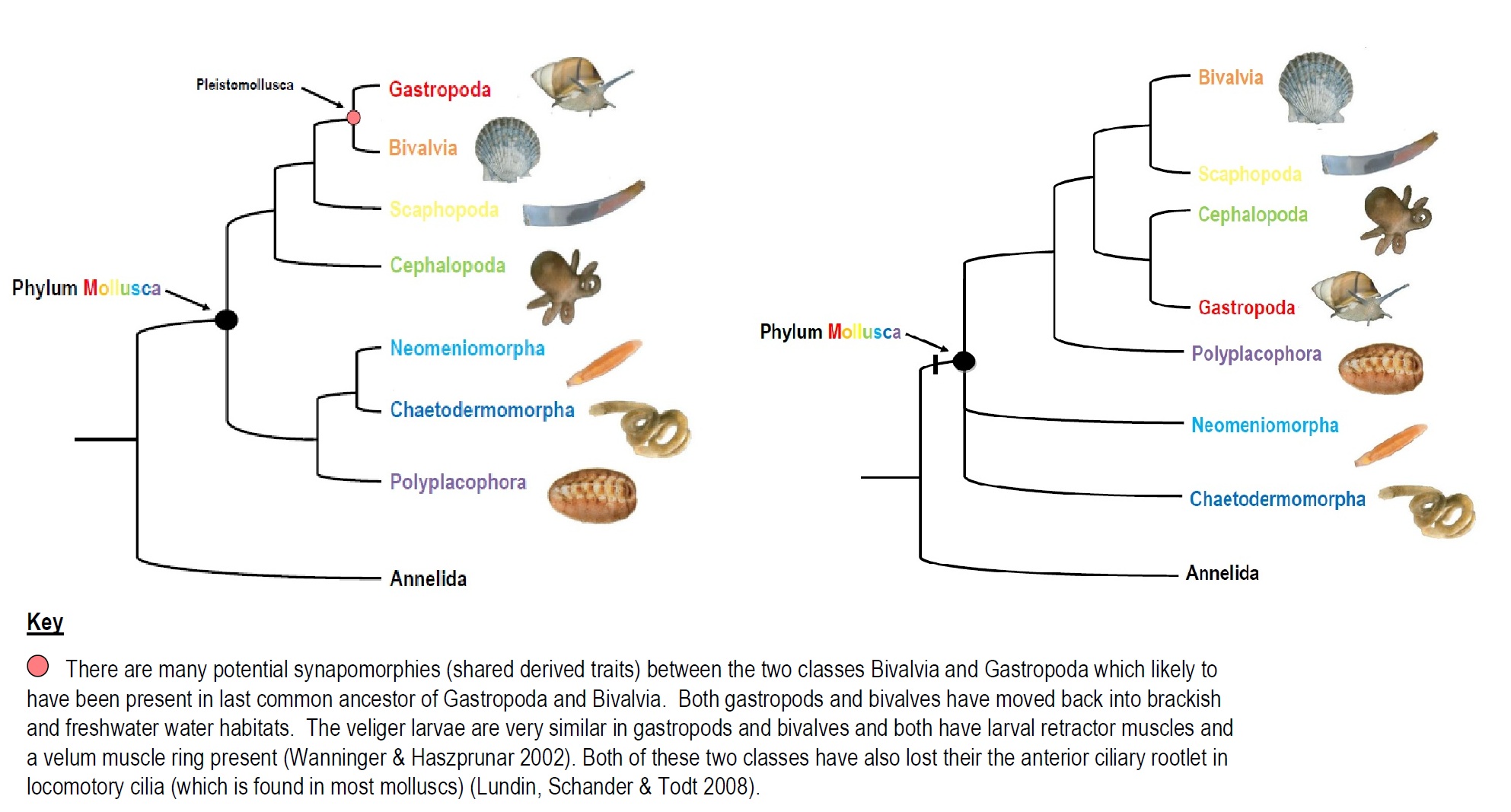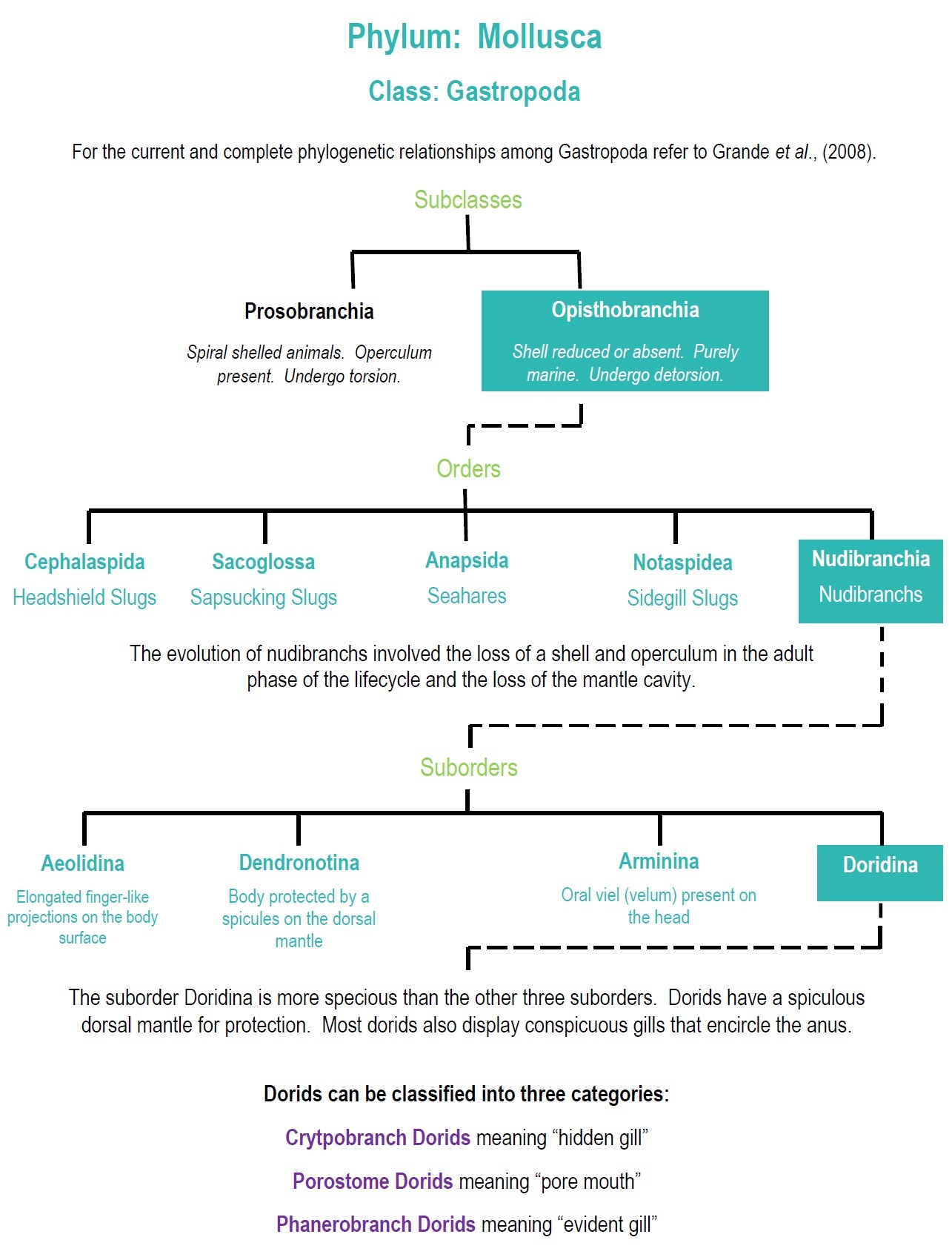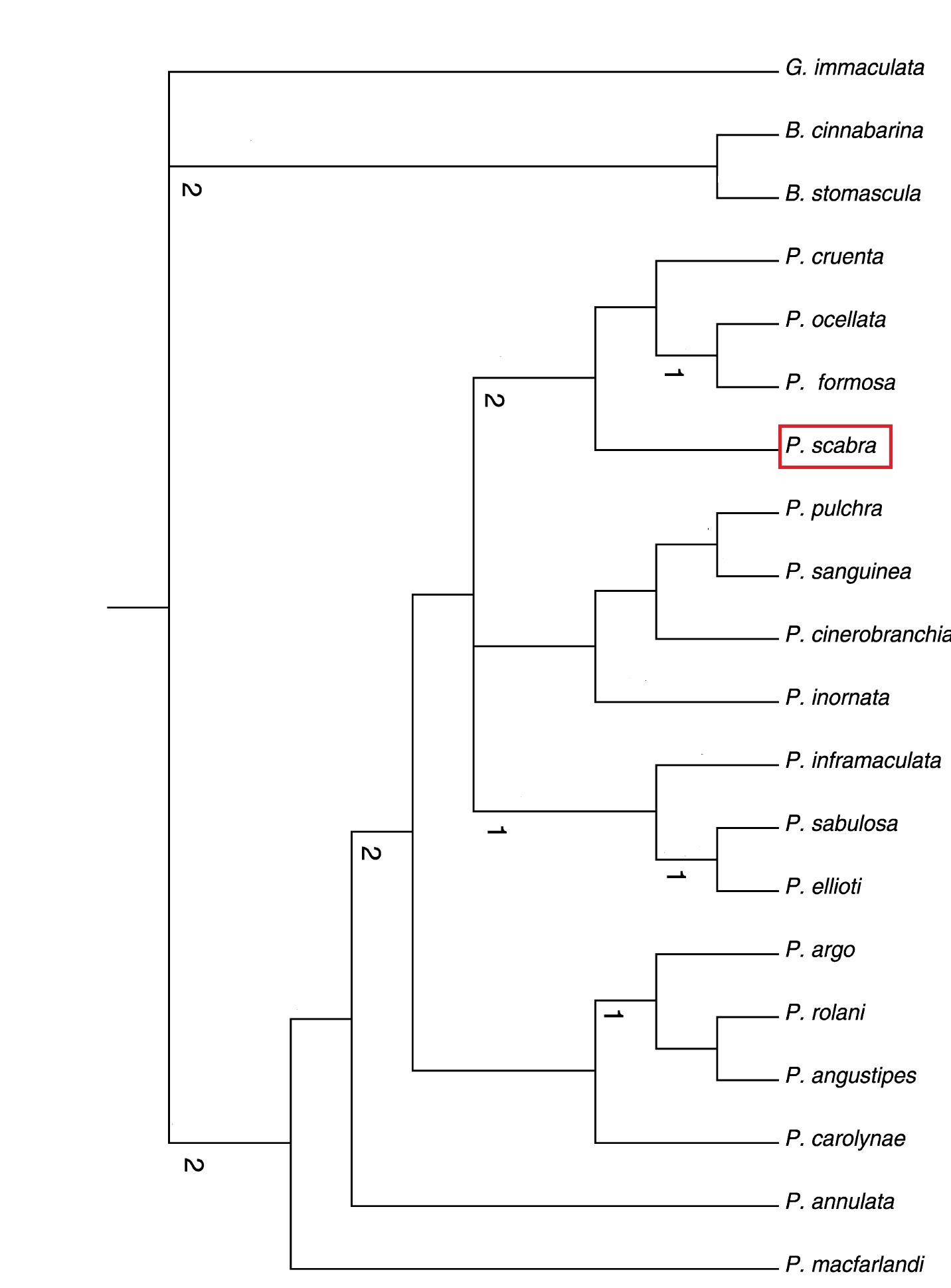Evolution & Systematics
Mollusca is one of the largest animal phyla, representing a diverse group of organisms including snails, mussels, oysters, squids and nudibranchs, to name a few. In all molluscs, the ventral body wall muscles were developed into a locomotory or clinging foot. Based on fossil evidence, it is believed that molluscs originated in the sea. The evolutionary relationships among the eight major lineages of molluscs have been investigated using phylogenetic, morphological and paleontological research. However, the evolutionary relationships are presently unresolved (Figure 1). Of particular interest is the placement of gastropods within the molluscs. A recent study using phylogenomics revealed that gastropods were most closely related to bivalves (Kocot et al. 2011) (Figure 1, A). The notable similarities between gastropods and bivalves (Figure 1) demonstrates support for their relationship as sister taxa (Kocot et al. 2011). These findings are important for understanding mollusc evolution. For more information regarding the gastropod phylogenetic hypothesises refer to Colgan et al., (2003) and Grande et al., (2008).

Figure 1. These phylogenetic trees represent two hypothetical relationships within the phylum Mollusca. Figure A was adapted from Kocot et al., (2011). Figure B was modified from Ruppert et al., (2004) and informed by Sigwart and Sutton (2007) and Valentine (2004).

Cryptobranch dorids are defined by their ability to retract their gills into a cavity in the mantle. Platydoris is a genus of the cryptobranch dorids. According to Dorgan et al., (2002) the characters that distinguish the genus Platydoris include:
- dorso-ventrally flattened body
- wide mantle
- vaginal hooks
- the presence of convoluted ampulla
- and, the location of the accessory gland (between the deferent duct and the vagina).
Pruvot-Fol (1951) was the first person to place Platydoris scabra into the genus Platydoris. Unfortunately, because Platydoris scabra lacks hard body parts, there is no reliable fossil record of this species. However, molecular and genetic data have been used to determine the phylogeny of the genus Platydoris. The current placement of Platydoris scabra in this phylum has been extensively reviewed by Dorgan et al., (2002). Dorgan et al., (2002) determined the phylogeny of the species within the genus Platydoris based on 23 morphological characters (Figure 2). The presence of denticles on the outermose radular teeth was the main character used when determining the placement of Platydoris scabra within its genus (Dorgan et al., 2002).

Figure 2. The strict consensus tree for the phylogeny of the genus Platydoris, based on 23 morphological characters, constructed by Dorgan et al., (2002). The numbers beside the branches represent the Bremer support analysis results (an index of tree stability). Platydoris scabra's placement in the tree is outlined in red. This phylogenetic tree is adapted from Dorgan et al., (2002).
|